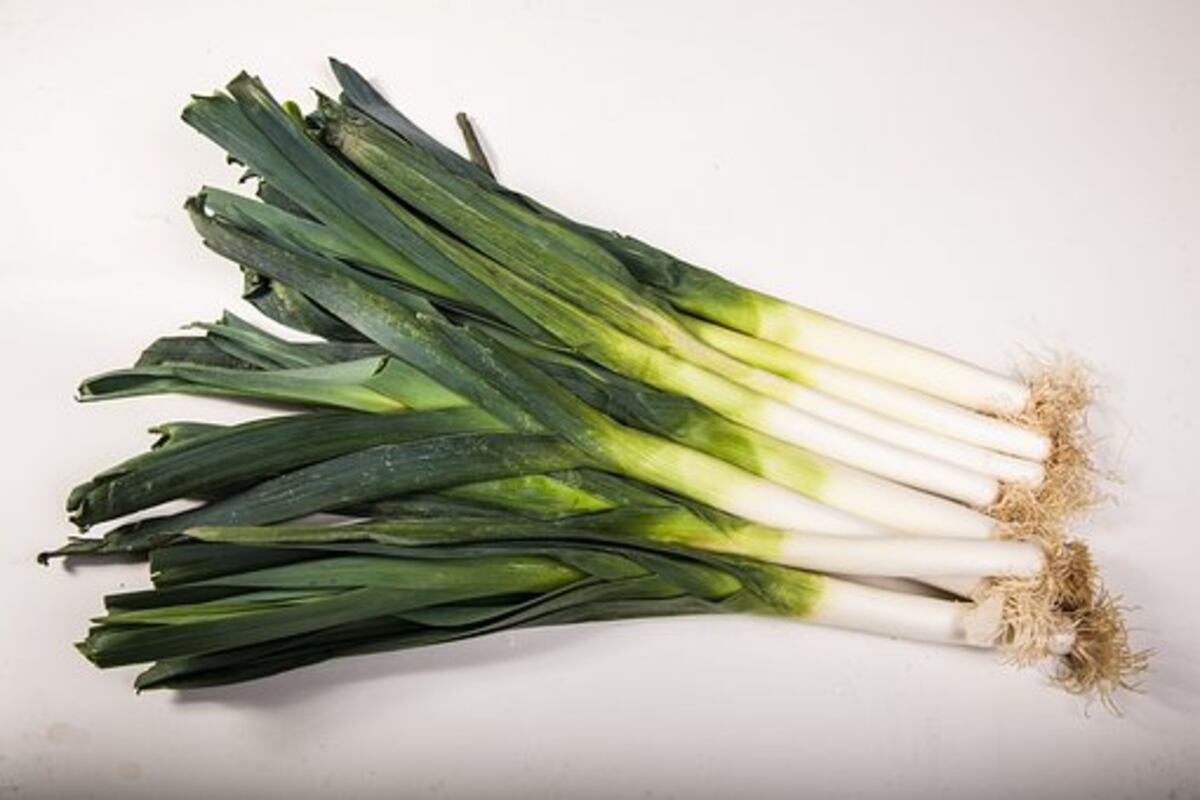The leek is a variety of the genus Allium. This genus contains many other vegetable plants, such as the Chinese onion, the shallot, and the garlic. While the leek is a member of the onion family, it has different characteristics than the onion. For example, the leek has leaf sheaths rather than the more familiar stem.
Table of Contents
Varieties
Leeks are one of the most versatile vegetables you can grow. They’re accessible to harvest and store and suitable for many dishes. They’re also good for you because they contain large amounts of vitamin C and folic acid. In addition, leeks have anti-arthritic and diuretic properties.
When planting, you should choose a location with lots of sunlight. It’s also a good idea to grow your leeks in a hoop house or polytunnel for optimal growth.
There are three primary categories of leeks: summer, fall, and winter. Summer varieties are grown during the warmer part of the year. As a result, they have a lighter, milder taste and are more heat-tolerant than winter varieties.
Common uses
Leek is an onion-like vegetable that is used as a side dish in different cuisines around the world. It is rich in fiber, antioxidants, and minerals.
Leek is a member of the Allium family. This group includes onions and other vegetables such as garlic, scallion, shallots, and chives.
Leeks are cold-resistant plants and grow in areas with plenty of humidity and nutrients. They also prefer deep soils. The leek plant is harvested early in the spring or later in the fall. During the early season, the plant produces a smaller bulb with a milder taste. Late-season leeks have a bolder flavor.
Health benefits
Leek is a beautiful vegetable that has numerous health benefits. It has several nutrients, and it also has anti-inflammatory properties. These properties are beneficial in fighting a wide range of diseases.
Leeks are rich in antioxidants, vitamins, minerals, and fibers. As a result, they are instrumental in preventing cardiovascular diseases and cancer. In addition to that, leeks are suitable for your digestive system. This vegetable is low in calories but high in vitamin B6, folate, potassium, and zinc.
Aside from reducing the risk of cancer, regular leek consumption may also help control cholesterol levels. Also, the fiber in leeks helps eliminate bad cholesterol from the body.
Pests and diseases
There are many leek pests and diseases that can plague your crops. One of the most common is leek rust. It’s caused by a fungus that is prone to wet conditions. If left untreated, it spreads to other plants in your garden.
Another common disease is powdery mildew. When left untreated, it causes the leaves to become distorted and discolored.
Leaf miners are also a threat to your leek plants. These insects burrow through the leaf surfaces of leeks, causing them to rot and decay.
To control the blight, you can use pesticides or improve the soil conditions. This can help your leeks survive the disease.
Washing
Cleaning leeks is an easy task that can be performed in no time. The first step is to remove the topmost leaves. They are usually white or pale green. To do this, you can use a fine mesh strainer.
After this, you should lay out the leeks on your cutting board. This should include the root end. Next, you should cut a slit in the dark green section of the leek. It’s essential to do this for two reasons. First, you’ll be able to remove the dirt, and second, it will help to hold the layers together.
If you have time, you may want to try cleaning the leek in a bowl of cold water. This will help get the topmost layers off while simultaneously limiting caramelization.
Freezing
Freezing leeks is an excellent way to preserve a leek’s flavor and texture without wasting your precious time and energy cooking and reheating them. You can get as many as three months of frozen leeks out of one.
The most crucial part of freezing a leek is removing the stem’s outer layer. This helps prevent mold and rot from developing in the leek.
Another key to a successful freezer storage is keeping the leeks dry. To avoid moisture from seeping out, use a perforated veggie bag. In addition, leeks defrost quicker and more effectively if they are cooled off by immersing them in a bowl of ice water.




